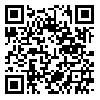







































2- professor, sharif university of technology
Nowadays, the use of advanced methods for controlling the movements of underwater robots has led to improved efficiency and enhanced operational quality. In this research, a method based on reinforcement learning has been developed for the depth control of AUV robots. This method learns the robot's movement pattern based on a reward criterion and makes the optimal decision for motion and control surface adjustments accordingly. Depth control using reinforcement learning improves the robot's performance and selects the most optimal control signal based on the robot's conditions and rewards. In this study, a linear dynamic model of pitch motion was used to develop the depth control model. For each desired state, the scenario is repeated 500 times to update the Q-matrix during simulation. Subsequently, by assigning rewards to each signal, the optimal value is determined. After completing the scenario, the optimal value from the Q-matrix is selected to determine the control signal for the fin. The results showed that the use of reinforcement learning significantly enhances the quality of the AUV robot's control system, resulting in minimal overshoot and oscillation in performance.
Received: 2025/05/13 | Accepted: 2025/07/17
| Rights and permissions | |
 |
This work is licensed under a Creative Commons Attribution-NonCommercial 4.0 International License. |






